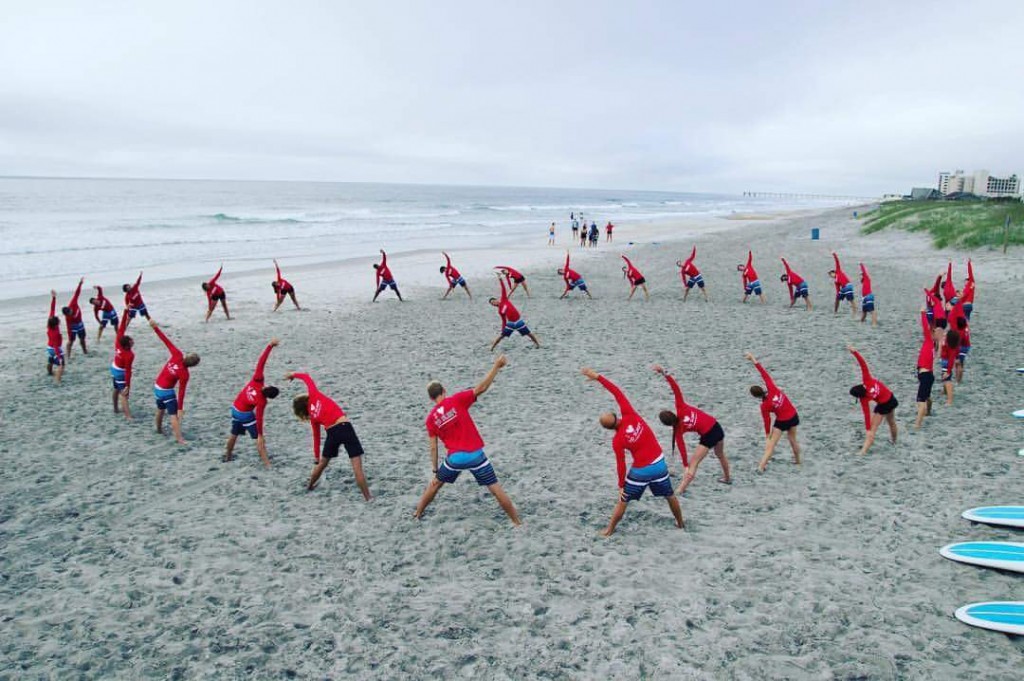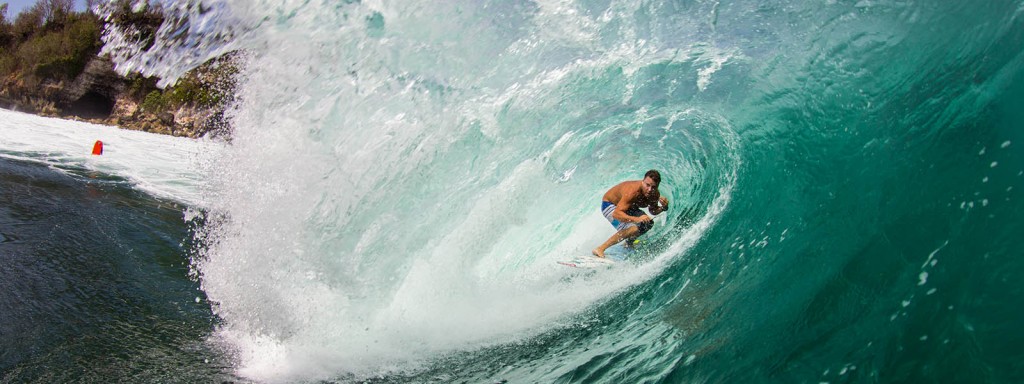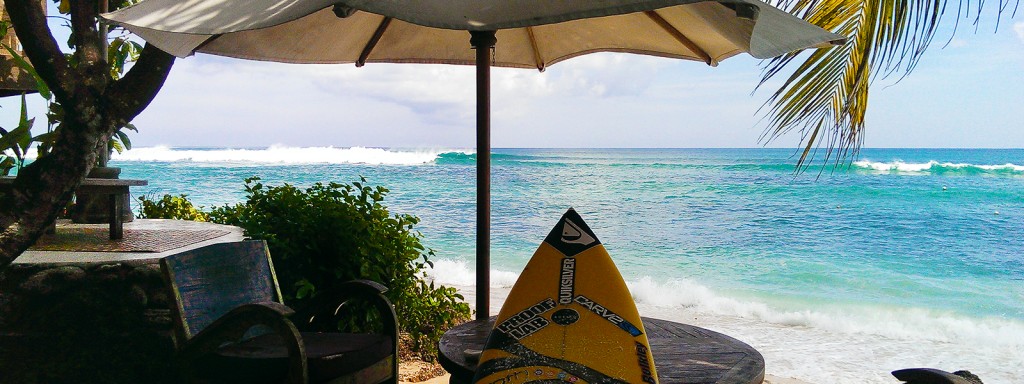Learning to Surf in Daytona Beach with Ryan Ragan, an Internationally Renowned Surfer, will probably be one of the most memorable experiences you will have during your stay in Daytona. Ryan has been surfing his whole life; sweeping his first contest at age 14 before deciding to make a career of it. Ryan has been competing and free surfing ever since, being featured in magazines and videos around the world. In recent years he has been recognized as one of the best surfing instructors in the world. Ryan now makes the world’s most famous beach, Daytona Beach, his home. Vast Oceans Surf and SUP shop is located at the International Speedway Beach approach in Daytona Beach, just off the beach ramp, next to Rick’s Surf Bar. It is also just an hour east of Orlando, Disney, and the Universal theme parks.
 Ryan likes to teach his students proper surfing skills, with an emphasis on “Technique and Style” in his approach. His experience in the world of professional surfing combined with a patient approach to teaching allows him to get “groms” of all ages into the waves for their first time. Central Florida surfers enjoy these professional instructions all spring, summer, and year-round, right on the beach in Volusia County.
Ryan likes to teach his students proper surfing skills, with an emphasis on “Technique and Style” in his approach. His experience in the world of professional surfing combined with a patient approach to teaching allows him to get “groms” of all ages into the waves for their first time. Central Florida surfers enjoy these professional instructions all spring, summer, and year-round, right on the beach in Volusia County.
Positioning and how you lay on your surfboard is extremely important if you want to catch waves, be safe, and have a good time. When laying on the board, it is important to keep your legs and feet together with your body centered on the surfboard. You should also keep your ankles and toes at the tale of the surfboard while also making sure your body is far enough back from the nose of the board to prevent you from nose diving when dropping in.
Safety and Protection, or how to fall correctly.
To help you prevent the most common wipe out, the nose dive, try staying back on your board when paddling or dropping in. If you do ever fall cover your face and head with your hands and forearms. If you fall, fall flat on your stomach, like a gentle belly flop, or if you fall backwards, fall flat on your rear end to help soften the fall. Never ever, under any circumstances, dive head first since you can severely damage your face, head, and neck. When falling forward put your hands out in front of you to break your fall. Surfing in the small waves off the East Coast of Florida can become quite dangerous if you fall incorrectly since falling in shallow waters can cause someone to break their neck if not careful.
Learning to understand the ocean and how it operates is essential to surfers and any individuals who express interest in our planet and oceans. What is the ocean? How is it different than lakes and seas? What is the temperature and pressure of the oceans? How are waves created? These are some of the very important and interesting questions people have about our oceans that are important to learn about. Knowing and understanding ocean storms and pressures, helps people predict when to go surfing.

What tide is it?
Tides are very long-period waves that move through the oceans in response to the forces exerted by the sun and moon. They originate in the oceans and progress out toward the coastlines, which appear as the regular rise and fall of the sea surface. Tide heights affect wave conditions, as increases, and decreases in water levels change the shapes (pitch) of the waves.
It’s also important to know is the local weather conditions. Changes in local winds and weather can really affect surfing conditions. When the winds blow onshore from the ocean, it makes the waves choppy and can become very rough. This is known as “victory at seas (VAS) conditions”. Ideally, surfers want the winds to blow light offshore, against the waves, which creates clean, groomed conditions that allows for surfers to more easily find a good ride and ,if they’re lucky, a nice tube! importance to know is the local weather conditions. Changes in local winds, and weather can really effect surfing conditions. When the winds blow onshore from the ocean, it makes the waves all choppy, and can become very rough. This is known as “victory at seas (VAS) conditions”. Ideally, surfers want the winds to blow light offshore, against the waves, which creates for clean groomed conditions that surfers can more easily find a good ride, and if their lucky, even a nice tube!
Duck Diving 101
To “duck dive” under a wave takes a lot practice to perfect. First, you will want to be balanced on your board. Paddle towards the whitewash in front of you, sink the board with your foot or your knee, compress the board down, extend your arms out, lay flat while letting the wave come over your head and go underneath the wave, and pop out the back of the wave. This is slightly difficult to learn on your own. We highly recommend 1 to 3 surf lessons minimum to become comfortable on the board.
It’s important as a surfer to know how to wax and dewax your surfboard. Surfboard wax is used to create friction, making you stick to your board. Without it, you’d just slip off as soon as you get in the water. An un-waxed surfboard is very slippery. To wax your surfboard right, you’ll need some supplies to get started: basecoat wax, topcoat wax, and a wax comb. Second, you’re going to need to clean the surfboard (If the board is new, skip to the next step). Clean it by scraping off the wax, using the straight side of the wax comb for the deck and curved side for the rails. Use a cleaning agent like ajax to remove any remaining waxy residue. Next, put on the basecoat. This is the most important step in applying new wax on a board. This is because the top layer wax adheres to the basecoat so if there isn’t a good foundation then the top coat won’t stick very well. The goal is to create a nice bumpy pattern. To do this, go to a flat side of your wax and rub in circular motions all over the board. A trick is to rotate the wax evenly to keep a nice flat surface of wax while applying. After a few minutes of application, you should start seeing the bumpy surface pattern start to appear. Lastly, you apply the topcoat of wax. This wax is much softer than base coat, which allows for your feet to stick to the surfboard. These top coats are very sensitive to temperature, so be sure to purchase the correct wax type for the temperature of water you will be surfing in. They are usually sold in Tropical and Cold Water variants. Wax gets softer when the water is warmer, so to make sure the wax is at an ideal level of softness or hardness. Top coat wax is applied similarly to the base coat, but you don’t need to push so hard since it is much softer wax.
Knowing what the proper surfing etiquette is incredibly important. The “Do’s and Don’ts” of surfing include, don’t drop in on someone else. Know who has priority on the peak. And make sure to look down the line so you don’t cut someone else off. Also make sure to stay out of the way when paddling back out and avoid getting in the way of people catching waves in front of you.
Learning to surf
These are all important things to know in order to grow and develop as surfers and individuals. That’s why Vast Oceans Surf Shop and Ryan Ragan do what they can to make this world a better place. Contributing greatly to the Daytona Beach, Volusia County, and Central Florida communities by committing to educate the youth and the world about the positive and self-fulfilling experience of surfing.



